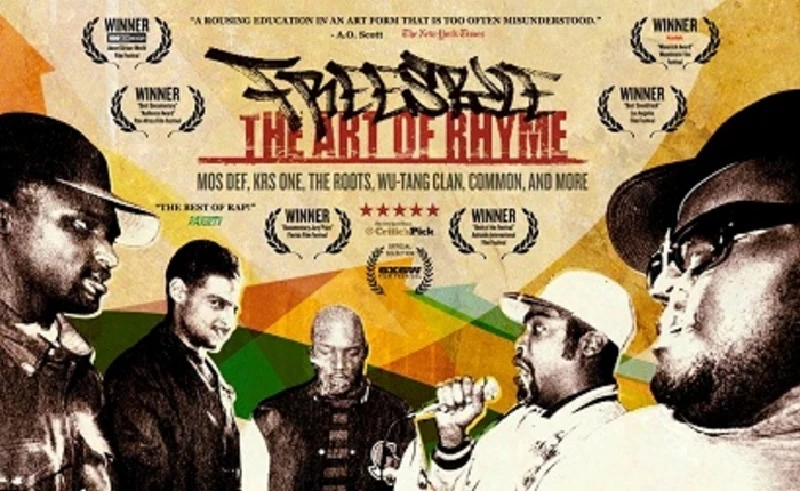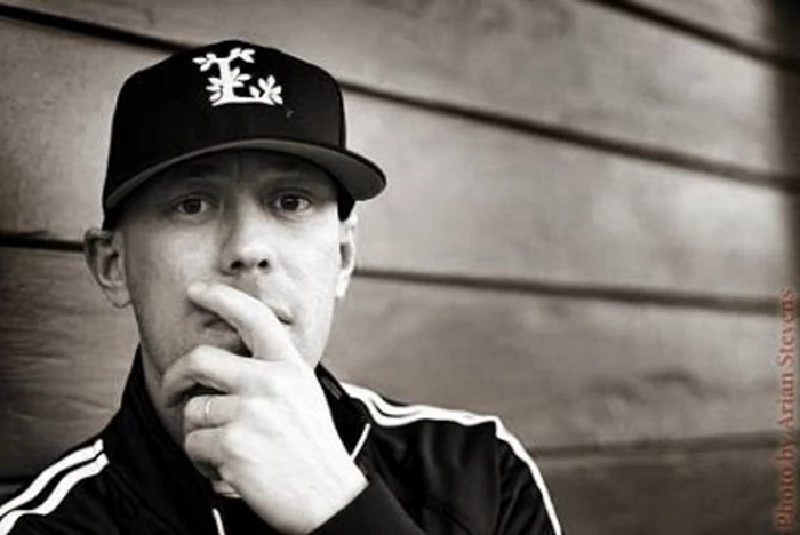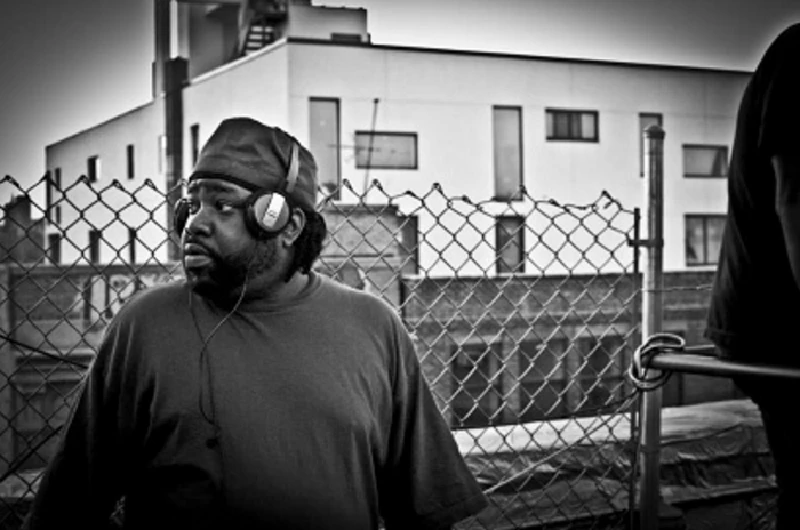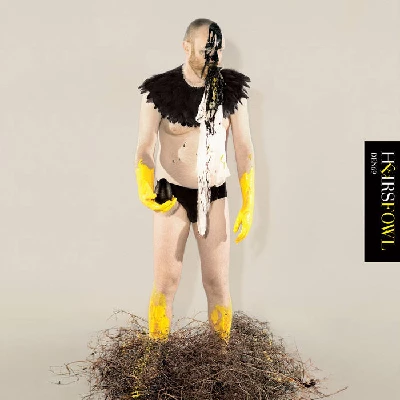Heirs - Interview
by Lisa Torem
published: 14 / 12 / 2013

intro
Lisa Torem talks to film director Kevin Fitzgerld about his hip-hop documentary, 'Freestyle: The Art of Rhyme'
"Like preachers and jazz solos, free styles exist only in the moment, a modern day incarnation of the African-American storyteller tradition." This philosophy is clearly stated in the early part of 'Freestyle: The Art of Rhyme', an award-winning documentary that includes dynamic live performances by MCs such as Supernatural, Mos Def, Notorious B.I.G. and Jurassic 5. Artist Craig G, who wrote material for the Eminem film '8 Mile', plays an important role too, and, of course, nobody would argue that it all began with DJ Kool Herc or that women such as Bahamadia and Medusa deserve to have a strong foothold on the freestyle mantle. When Elvard Burt II asserts, "Rap is just a stem, a part of the branch of what we are all about" it brings to mind Willie Dixon's famous quote: "the blues are the roots, the rest are the fruits." The film explores musical history, going back to the African Griot, the community storyteller. Whilst Doug Pray's film Scratch focused on the role of the DJ, and '8 Mile' focused primarily on Eminem's rise, this film deeply explores the fascinating role of the MC; the flow, the battle, the cipher, the humour and how it fits within the larger historical context. The film also captures the spontaneous crowd reactions and inventive rhyming that makes this performance style so contagious, uplifting and controversial. But it's also a style of music that many people feel has been blasted by the corporate world; a style that bears deep cultural roots and continues to inspire sparring on both American coasts but has been underappreciated as an important, contemporary, communicative art form. Although the documentary first screened in 2005, it has recently come out in a new format, which includes an additional forty-five minutes of director commentary, extra footage, deleted scenes and interviews. This new version will be screened starting this summer at select cities in Canada, the US and the UK. Thus far, the documentary has received awards from the Florida Film Festival Pan-Am Film Festival, Karachi Film Fest and been chosen Official Selector at Copenhagen International Documentary Film Fest, Sundance, SXSW and Leeds International Film Festival. Director Kevin Fitzgerald is well aware that many of the filmed artists were inspired not just by cultural mentors but by the language facility of preachers delivering sermons. The film is a must for those interested in the genre, but who have limited background or for those who simply enjoy the art form. Fitzgerald discusses the origins of freestyle and speaks to Pennyblackmusic about why this revised documentary deserves to be enjoyed and taken seriously. PB: Who was instrumental in making 'Freestyle: The Art of Rhyme'? KF: Director: Kevin Fitzgerald aka DJ Organic, Director of Photography: Todd Hickey, Academy Award Nominated Producer: Henry Alex Rubin, Sofia Coppola's Producer: Youree Henley ('The Bling Ring'). PB: What makes this updated version unique? KF: The first DVD was released in 2005, but the film is improvisational in structure and kept evolving over the years. In a way, it’s been a constant work in progress because it continues to screen theatrically as a work in progress since the screenings are live and incorporate 'Rocky Horror Picture Show' type format where local MCs and artists from the film will jam with it before and after; performing in ciphers on, off, around screen and sometimes during. This release in 2013 is a special limited edition DVD with extra bonus footage never seen before. Links: www. Freestylethefilm.com PB: According to the promotional ad, “the film systematically debunks the false image put out by record companies that hip-hop culture is violent or money-obsessed.” Can you elaborate? KF: We focused the camera on the positive creative, live aspects of the music and culture of improvisational hip-hop. The other parts have been given too much attention in the past, but we wanted to tell about the history of the making of the music from the ground up; The grass roots on the black organic aspects, not that pop bling side that can be a bit over the top and whack in our opinion. PB: The film took more than seven years to complete. How did you keep things current? KF: I grew up in the culture in New York and LA. Many of the people in the film I was personal friends with. This is a story about guys I used to see at local open mics. So, it was a natural progression of capturing and telling the story over a long period of time and dedication and knowing that what we were doing was important and had to be done, because these scenes would never be like this again. It actually took longer than seven years, but we try not to tell people that. In a way, the film was an improvisational creation itself that kept evolving over time. PB: When shooting the verbal battles between Supernatural and Craig G., what was most important to illustrate? KF: Those battles were captured by friends of the MCs and promoters of the events Lyricists Lounges: Anthony Marshall and Danny Castro. I think it was a combo of them and Supernat who provided us that footage. and we edited it with our own interviews of Supernatural and Craig G giving the play by play. Our editor, Paul Devlin, was instrumental in helping to craft those scenes. PB: How would you characterise the MCs you interviewed and filmed? KF: Live! Man, the energy of these MCs in the ciphers. It's just an incredible thing to be a part of ,and the intelligence and creative ability required to rhyme like that off the top of the head and make it make sense and tell a story is just an amazing ability to behold in person. And then to be able to get into their brain about what is going on when they do that was also a great privilege. PB: What’s the difference between a “cipher” and an “MC battle?” KF: Cipher's to me is where it's at. It's like an instant community art project that is organic and forms and dissolves on the spot on the block where ever. It's so dope! Battles to me are kind of whack. They have their place, don't get me wrong, but now with the whole Internet MC thing with Gringtime and King of The Dot, it's kind of gone back to Junior High and name calling. I like uplifting stuff, things that make the community better and stronger, all of it is just good old fun and it's only when these MCs start to take themselves a bit too seriously that the negative, mean, hateful stuff comes out and it gets a bit gross. But for some people they like that and think it's cool. But I come from the Good Life/Project Blowed era of no cursing on the mic and stuff like that so my mindset is a bit different. PB: As “freestyle exists only in the moment,” how can a performer prepare? KF: That's a good question. Some MCs read the rhyming dictionary. Some are just born with that natural gift to string words together in a nice way that sounds dope and makes sense. Ciphering is a good way to sharpen your skills, just rhyming with your friends is fun, playing the dozens was also a good way back in the day of cutting on each other, in jest, like the British term “taking the piss.” PB: “You really can’t freestyle if you don’t know anything,” says a freestyle advocate. What subject matter should you know to be effective and relevant? KF: Politics, comedy, history, science, it's all fair game, Pop culture. basically. The more you know the better and more eclectic your rhymes can be. PB: What major American and European cities currently support the freestyle movement? KF: I would say New York is the Mecca because that's where the formal tradition started, and that is the hometown of the original flavour! Then second would be Los Angeles, San Francisco, Chicago, etc., all big cities, Paris, London, etc. PB: How do you see the connection between the African Griot and the current day freestyle performer? KF: Well, this is the OG of all OG's. The original MC! He was the poet, historian and storyteller of his tribe or village and was taught this improvised story in song by his father and so on, like the town crier, or European troubadour tradition. This Griot tradition came to America via our ancestors who were brought over against their will to work, and the story become more urgent and improvisational, developing into the ring shout, blues, jazz, the dozens, funk, scatting, toasting, rap and hip hop via the toasting of Jamaican reggae, DJ/MC's who were emulating the rapping American disc jockeys they would hear on the radio from Florida and New Orleans. PB: How did you choose the current line-up of screening houses? KF: Oh, man, that was a major organic process; just research and networking, hyping the project ourselves via our self made Hip Hop Film Festival that toured the globe for years. We kind of did a hybrid self distro model. This is pre-Internet social media. PB: Will this film further legitimise freestyle; inspire a dialogue? KF: I think that art form is already well established on its own. Hip Hop is almost 45 years old as a musical genre, and freestyle was one of the first parts of it. Movies like '8 Mile' and TV shows like 'Wiling Out' and 'The BET Cypher', I think, have done a great job of spreading the art form. PB: What other projects will follow in the coming year? KF: So many, right now I'm back in school studying Traditional Chinese Medicine, I am working on some films about healing and developing a modality called Therapeutic Filmmaking. PB: Thank you.
Have a Listen:-
Picture Gallery:-


reviews |
|
Fowl (2011) |

|
| Unsettling, but forceful electronica on debut album from haunting-sounding Melbourne-based instrumental outfit, Heirs |
most viewed articles
current edition
Peter Doherty - Blackheath Halls, Blackheath and Palace Halls, Watford, 18/3/2025 and 21/3/2025Armory Show - Interview with Richard Jobson
Liz Mitchell - Interview
Lauren Mayberry - Photoscapes
Deb Googe and Cara Tivey - Interview
Max Bianco and the BlueHearts - Troubadour, London, 29/3/2025
Garfunkel and Garfunkel Jr. - Interview
Maarten Schiethart - Vinyl Stories
Clive Langer - Interview
Kim Wilde - Photoscapes
previous editions
Heavenly - P.U.N.K. Girl EPBoomtown Rats - Ten Songs That Made Me Love....
Trudie Myerscough-Harris - Interview
Doris Brendel - Interview
Beautiful South - Ten Songs That Made Me Love...
Pulp - Ten Songs That Made Me Love...
Kay Russell - Interview with Kay Russell
Dwina Gibb - Interview
Sound - Interview with Bi Marshall Part 1
Barrie Barlow - Interview
most viewed reviews
current edition
Davey Woodward - Mumbo in the JumboNigel Stonier - Wolf Notes
Wings - Venus and Mars
Kate Daisy Grant and Nick Pynn - Songs For The Trees
Only Child - Holy Ghosts
Neil Campbell - The Turnaround
Philip Jeays - Victoria
Darkness - Dreams On Toast
Suzanne Vega - Flying With Angels
Charles Ellsworth - Cosmic Cannon Fodder
Pennyblackmusic Regular Contributors
Adrian Janes
Amanda J. Window
Andrew Twambley
Anthony Dhanendran
Benjamin Howarth
Cila Warncke
Daniel Cressey
Darren Aston
Dastardly
Dave Goodwin
Denzil Watson
Dominic B. Simpson
Eoghan Lyng
Fiona Hutchings
Harry Sherriff
Helen Tipping
Jamie Rowland
John Clarkson
Julie Cruickshank
Kimberly Bright
Lisa Torem
Maarten Schiethart